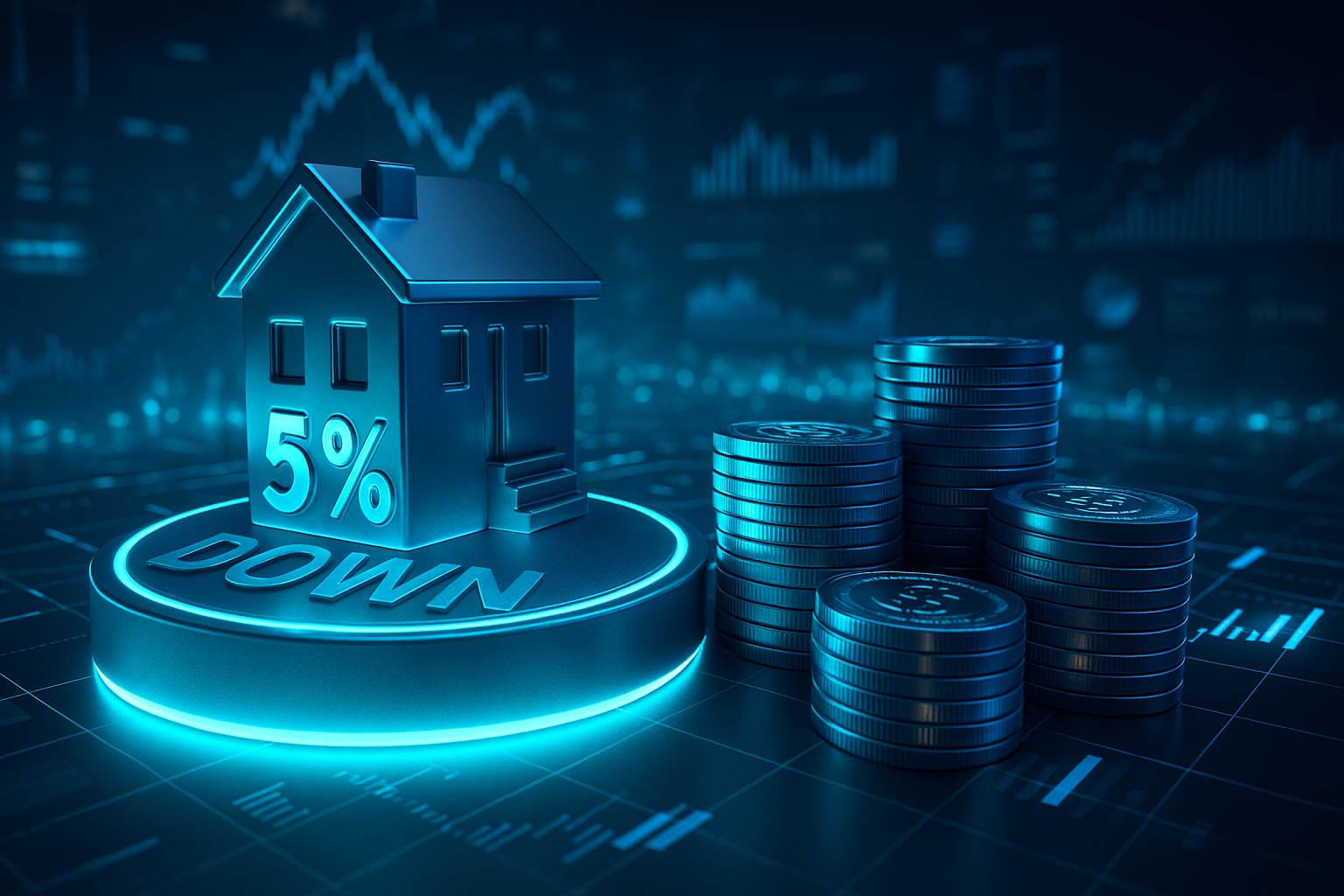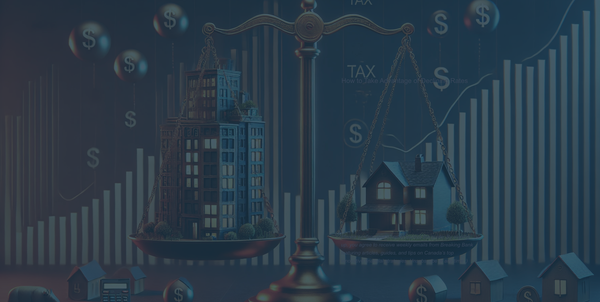You’ve got two choices:
- Save for years to hit 20% down.
- Buy with 5% down and get in the market now.
Both come with baggage. One delays your wealth. The other costs more to build it.
If you're staring down today’s home prices thinking “I’ll never save enough”—you’re not alone. But before you jump into a 5% down mortgage, understand this:
Getting in early isn’t free. It just feels like it.
Let’s break down exactly how low-down payment mortgages work, where they help, and where they bite you.
⚙️ The Mechanics: How 5% Down Works in Canada
Here’s what CMHC and the other insurers allow:
- Under $500,000? Minimum 5% down.
- $500K to $999K? 5% on the first $500K + 10% on the rest.
- Up to $1.5 million? As of December 15, 2024, you can now qualify for an insured mortgage—with the same down payment structure: 5% on the first $500K and 10% on the portion between $500K and $1.5 million.
This new $1.5M cap opens the door for more buyers in high-cost markets to enter the game with a smaller upfront investment.
And if you put down less than 20%, you’re taking on default insurance—a premium tacked onto your mortgage. That cost? Between 2.8% and 4% of the loan, depending on your down payment. And yes, it’s usually rolled in, which means you pay interest on the insurance too.
✅ What You Gain by Putting Down Less
1. Faster Market Access Waiting to save 20% while home prices climb is like trying to fill a leaky bucket. A 5% down payment gets you in the game now, not 3 years from now when prices are higher and you’re still behind.
2. Insured Mortgage = Lower Rates Lenders love insured mortgages. The risk’s off their books. That means they’ll often give you better interest rates than someone with 20% down and no insurance.
3. Optionality Buying with 5% down doesn’t lock up your liquidity. You keep cash in the bank. And if life happens—job change, relationship shift, whatever—you’re not deep underwater.
❌ What You Sacrifice (and It’s Not Small)
1. Higher Monthly Payments You’re borrowing more. And adding insurance to your loan. That’s a double whammy. The monthly hit is higher—no way around it.
2. More Interest Over Time Bigger mortgage = more interest. Even if your rate is sharper, the total interest paid is higher because your loan balance is bloated.
3. Slower Equity Buildup In the first few years, you’re barely touching principal. Most of your payment feeds the bank. Add that to the higher balance and you’re building wealth at a crawl.
4. Less Refinance Flexibility Insured mortgages restrict your options. Want to pull equity out later? Refinance with a different lender? Good luck. Your flexibility is capped unless you re-qualify and re-insure (if even allowed).
📈 The Power of Leverage: Turning 5% into 20%
With 5% down, you're getting 20x leverage on your money. That means for every 1% the property value increases, you get a 20% return on your initial investment.
Let’s break it down:
- Purchase Price: $300,000
- Down Payment (5%): $15,000
- If the property value rises 1% to $303,000, that's a $3,000 gain.
- Return on your $15,000 down payment? 20% ($3,000 ÷ $15,000)
This is one of the reasons homeownership often outpaces renting in the long run. Even modest price increases can significantly boost your equity when you're highly leveraged.
Think about it: If you had to save 100% of the cash to buy the property, do you realistically believe you would ever be able to own a home? Depending on market conditions, the longer you wait, the more ground you could lose.
🛡️ Default Insurance: Your Hidden Safety Net
Most people think mortgage default insurance only protects the lender. But it can also protect you.
Some insurers offer support programs to help homeowners through temporary financial troubles—like a job loss, illness, divorce, or natural disaster. These programs typically work by:
- Offering payment deferrals during a tough period
- Extending amortization periods to lower payments
- Setting up shared payment plans (where the insurer covers part of the mortgage payment)
- Adding missed payments to the loan balance (capitalizing arrears)
- Restructuring mortgage terms to fit a new financial reality
For example, Sagen’s Homeowner Assistance Program (HOAP) has helped over 63,000 Canadian families avoid losing their homes, with a success rate of over 90% .
Knowing that your default insurance can act as a safety net if unexpected hardships arise can provide extra peace of mind.
🎯 The Real Question
Do you want in now—knowing the trade-offs—or do you want to wait, save more, and potentially miss out?
There's no right answer.
If your income is stable, you’re staying put for 5+ years, and you’ve stress-tested your budget? 5% down might be a smart move.
But if you're stretching, or banking on appreciation to bail you out? Be careful. A hot market can cool. And higher payments don’t feel so hot when rates jump or life gets messy.
Final Take
Buying with 5% down is like using a credit card to grab a seat at the wealth table. You’ll pay for it—but you’ll own something.
It’s not free. It’s not cheap. But it might be smarter than waiting—depending on your market, your goals, and your risk tolerance.
So don’t ask, “Can I buy with 5%?” Ask: “What will it cost me if I don’t?”
Then run the numbers. Talk to a real mortgage strategist. And make the move that sets you up, not sets you back.
Disclaimer: The information in this article is provided for general educational purposes only and does not constitute financial, legal, or tax advice. Readers should consult qualified professionals before making decisions based on this content. View our full Disclaimers & Privacy Policy →




You’ve got two choices:
Both come with baggage. One delays your wealth. The other costs more to build it.
If you're staring down today’s home prices thinking “I’ll never save enough”—you’re not alone. But before you jump into a 5% down mortgage, understand this:
Getting in early isn’t free. It just feels like it.
Let’s break down exactly how low-down payment mortgages work, where they help, and where they bite you.
⚙️ The Mechanics: How 5% Down Works in Canada
Here’s what CMHC and the other insurers allow:
This new $1.5M cap opens the door for more buyers in high-cost markets to enter the game with a smaller upfront investment.
And if you put down less than 20%, you’re taking on default insurance—a premium tacked onto your mortgage. That cost? Between 2.8% and 4% of the loan, depending on your down payment. And yes, it’s usually rolled in, which means you pay interest on the insurance too.
✅ What You Gain by Putting Down Less
1. Faster Market Access Waiting to save 20% while home prices climb is like trying to fill a leaky bucket. A 5% down payment gets you in the game now, not 3 years from now when prices are higher and you’re still behind.
2. Insured Mortgage = Lower Rates Lenders love insured mortgages. The risk’s off their books. That means they’ll often give you better interest rates than someone with 20% down and no insurance.
3. Optionality Buying with 5% down doesn’t lock up your liquidity. You keep cash in the bank. And if life happens—job change, relationship shift, whatever—you’re not deep underwater.
❌ What You Sacrifice (and It’s Not Small)
1. Higher Monthly Payments You’re borrowing more. And adding insurance to your loan. That’s a double whammy. The monthly hit is higher—no way around it.
2. More Interest Over Time Bigger mortgage = more interest. Even if your rate is sharper, the total interest paid is higher because your loan balance is bloated.
3. Slower Equity Buildup In the first few years, you’re barely touching principal. Most of your payment feeds the bank. Add that to the higher balance and you’re building wealth at a crawl.
4. Less Refinance Flexibility Insured mortgages restrict your options. Want to pull equity out later? Refinance with a different lender? Good luck. Your flexibility is capped unless you re-qualify and re-insure (if even allowed).
📈 The Power of Leverage: Turning 5% into 20%
With 5% down, you're getting 20x leverage on your money. That means for every 1% the property value increases, you get a 20% return on your initial investment.
Let’s break it down:
This is one of the reasons homeownership often outpaces renting in the long run. Even modest price increases can significantly boost your equity when you're highly leveraged.
Think about it: If you had to save 100% of the cash to buy the property, do you realistically believe you would ever be able to own a home? Depending on market conditions, the longer you wait, the more ground you could lose.
🛡️ Default Insurance: Your Hidden Safety Net
Most people think mortgage default insurance only protects the lender. But it can also protect you.
Some insurers offer support programs to help homeowners through temporary financial troubles—like a job loss, illness, divorce, or natural disaster. These programs typically work by:
For example, Sagen’s Homeowner Assistance Program (HOAP) has helped over 63,000 Canadian families avoid losing their homes, with a success rate of over 90% .
Knowing that your default insurance can act as a safety net if unexpected hardships arise can provide extra peace of mind.
🎯 The Real Question
Do you want in now—knowing the trade-offs—or do you want to wait, save more, and potentially miss out?
There's no right answer.
If your income is stable, you’re staying put for 5+ years, and you’ve stress-tested your budget? 5% down might be a smart move.
But if you're stretching, or banking on appreciation to bail you out? Be careful. A hot market can cool. And higher payments don’t feel so hot when rates jump or life gets messy.
Final Take
Buying with 5% down is like using a credit card to grab a seat at the wealth table. You’ll pay for it—but you’ll own something.
It’s not free. It’s not cheap. But it might be smarter than waiting—depending on your market, your goals, and your risk tolerance.
So don’t ask, “Can I buy with 5%?” Ask: “What will it cost me if I don’t?”
Then run the numbers. Talk to a real mortgage strategist. And make the move that sets you up, not sets you back.
Disclaimer: The information in this article is provided for general educational purposes only and does not constitute financial, legal, or tax advice. Readers should consult qualified professionals before making decisions based on this content. View our full Disclaimers & Privacy Policy →
Read Next
Renewal Readiness: Steps You Should Be Taking Every Five Years
Canada’s 2026 Housing Shift: What Every Homeowner and Investor Should Be Watching
Winnipeg Real Estate Market 2025: Stability Amid Change
First-Time Homebuyer Checklist for Canadians